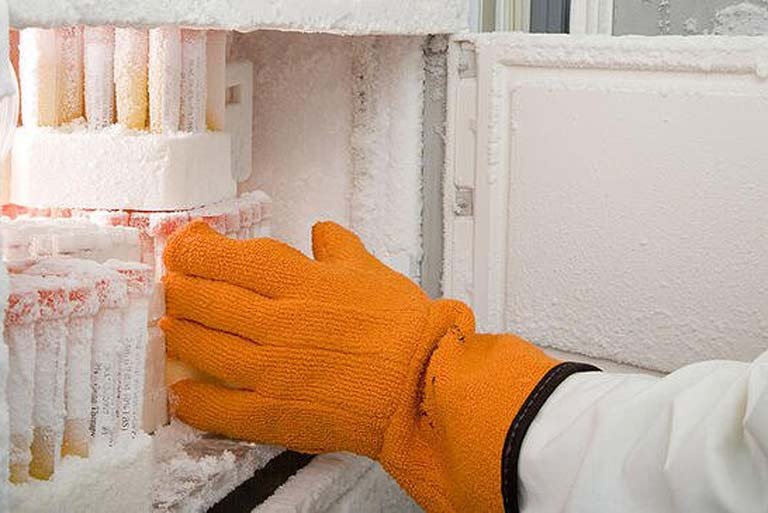Vaccine Storage Best Practices
Before 2020, vaccine storage was not too much of a hot topic. But, in case you missed it — COVID changed the narrative.
Last updated February 21, 2024
Best Practices for Safely Storing Vaccines
As of today, everyone understands that vaccine storage, handling, and distribution represents a distinctive logistical challenge known as the cold chain, characterized by stringent temperature requirements, with some vaccines requiring sub-zero storage temperatures (e.g., Pfizer’s COVID vaccine must be stored at -90°C), while others simply need to be maintained at refrigerator temperatures. The Centers for Disease Control and Prevention (CDC) declared that “vaccines licensed for refrigerator storage should be stored at 2°C-8°C.”
If you’re a vaccine manufacturer or distributor, here are some of the “cold facts” you should consider about vaccine storage and handling errors:
What types of vaccine storage units are required? Single vs dual compressor?
Will you need -4°C, -20°C, or -80°C units?
What are the recovery times for your storage units?
How are you calibrating temperature sensors?
What about mitigating factors in your facility or lab (HVAC, leaks, etc.)?
If you’re not sure, we’re happy to help answer these questions and more: just contact us.
There’s another key element in ensuring best practices are met and kept during vaccine storage, and that element is security. The thing is, security needs often (ALWAYS) extend beyond the lab itself. Security is essentially required in every single step of your cold chain vaccine management plan: from manufacturing to distribution vehicles and storage facilities, to pharmacies and health care sites.
Now, consider this: A single lapse in security can create a ripple effect in the cold chain that will most certainly have a human cost. Do you have the answers to these questions?
Who are the players in your cold chain?
How often are the shipments “touched?”
What kinds of storage units are being used during transport?
Vaccine Storage Mistakes Have Severe Consequences
When it comes to vaccine storage and handling errors, undetected mistakes can lead to more critical issues, such as diminished potency, and being forced to discard entire product shipments, which could lead to loss of lives and affect capital preservation.
Unless you’re precisely, proactively, and constantly monitoring your storage systems, you could experience something such as a slight decline in temperature or other error that reduces efficiency. While keeping an equipment logbook tracking installation dates and maintenance dates is helpful, it’s more reactive than proactive.
The cornerstone of success in vaccine storage and handling is foresight rather than hindsight.
Addressing Challenges is More Effective Than Simply Managing Them When They Arise
On a positive note, the obstacles associated with vaccine storage are largely recognized, and there are available tools and services to assist in overcoming them. A valuable point of reference is the CDC's dedicated Guide on Vaccine Administration, Storage, and Handling. If your facility experiences a power outage that can impact your vaccine storage, we encourage you to review the CDC's best practices guide to prepare your facility.
It’s worth noting that there are specialized, portable storage units tailored for pharmaceutical-grade use, specifically designed for vaccines and therapeutics, with built-in temperature monitoring devices (TMD) included.
If you’re not using TMD-enabled equipment, now’s the time. The CDC also makes one of many perfect cases for TMD devices for vaccines, stating “Investing in a reliable [TMD] device is less expensive than replacing vaccines wasted due to the loss of potency that comes from storage at out-of-range temperatures.”
New systems and platforms now exist to automate monitoring tasks and facilitate preventative maintenance rather than reactive responses. Traditional calendared maintenance, to be direct, holds little value, as most units do not adhere to strict schedules for potential malfunctions.
Luckily, these systems are now available to any company that seeks to implement them, and don’t affect the company’s infrastructure or require a massive investment or additional personnel.
Vaccine Management Plan
XiltriX is the first to offer Monitoring-as-a-Service. Whether you’re interested in monitoring Ultra Low Temperature (ULT) units, facilities, or lab equipment, we ensure systems, services, and solutions are running smoothly, securely, and optimally, while keeping costs both manageable and predictable. We ensure that our clients have every tool and data set available to optimize and secure vaccine storage practices, processes, and facilities.
XiltriX North America leverages industrial-grade hardware, user-friendly interphase, and more than 30 years of experience serving the life science industry. XiltriX provides full operational oversight and helps customers address issues before they arise with the help of SafetyNet. SafetyNet is a team of monitoring experts who provide 24/7 live support. In addition to being on every alarm escalation protocol, the SafetyNet team will assist you with system configuration and administration, troubleshooting, unlimited training, live phone calls, and they’ll act as an extension of your team.
If you’re interested in learning more about how to prevent Freezer Failure in the Lab, check out our new eBook.



